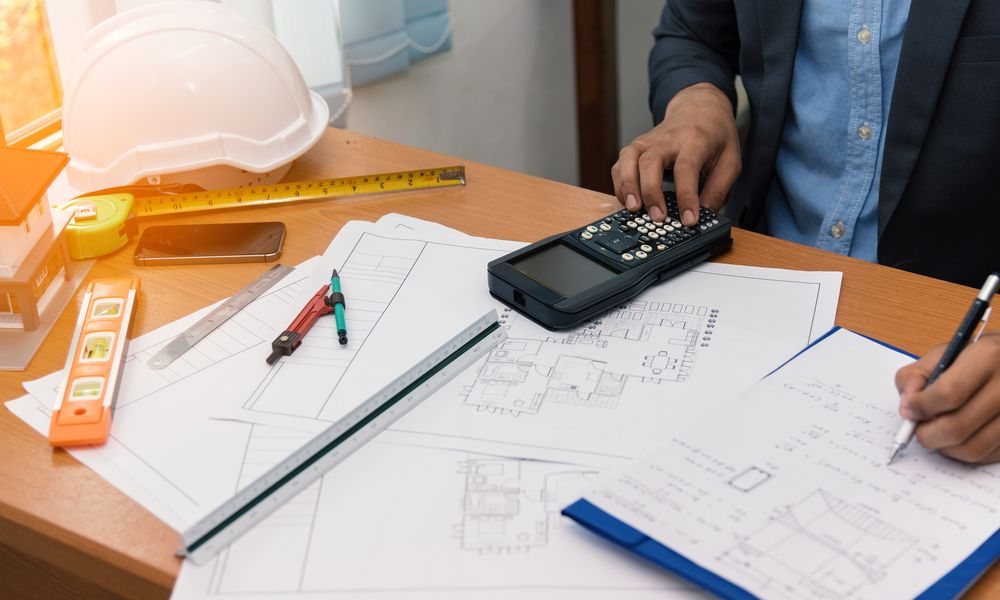Value engineering (VE) is an essential process in construction that focuses on optimizing value by reducing costs without sacrificing quality or functionality. Central to this process are quantity surveyors (QS), who play a vital role in balancing cost efficiency with project needs.
By leveraging their expertise in cost estimation, budgeting, and project management, quantity surveyors contribute significantly to making value engineering a practical and impactful strategy.
This guide explores the unique role of quantity surveyors in value engineering, examining their responsibilities, contributions, and how they support successful project outcomes.
Understanding Value Engineering in Construction
Value engineering in construction is a systematic approach that seeks to improve the value of a project by evaluating its components, materials, and methods. This process encourages creativity, cost-efficiency, and collaboration among project stakeholders to find solutions that offer the best balance between function and cost.
Quantity surveyors work alongside architects, engineers, and contractors to ensure that VE strategies are both feasible and beneficial to the project’s budget and objectives. Their expertise in cost management enables them to provide valuable insights into how VE principles can be applied without sacrificing the project’s intended functionality or quality.
The Role of Quantity Surveyors in Value Engineering
The quantity surveyor’s role in value engineering is multi-faceted and involves detailed cost analysis, project budgeting, and financial forecasting. Let’s explore these critical responsibilities and how they contribute to successful VE outcomes.
Cost Estimation and Budget Analysis
One of the primary responsibilities of a quantity surveyor in VE is to provide accurate cost estimates and detailed budget analyses. Cost estimation is essential for determining the financial impact of various VE alternatives, helping stakeholders make informed decisions.
- Estimating Costs for Alternatives: Quantity surveyors examine different materials, designs, and methods, providing cost estimates for each option. This process allows the VE team to compare alternatives based on potential savings and overall value.
- Budget Analysis: Quantity surveyors review the project’s budget in depth, identifying areas where VE strategies can optimize costs without compromising quality.
Function Analysis and Cost-Benefit Evaluation
Function analysis is the process of evaluating the purpose and performance of each component within a project. Quantity surveyors assess the cost-benefit of these components, aiming to ensure that every element provides maximum value.
- Identifying Key Functions: Quantity surveyors work closely with the project team to understand essential functions that must be maintained. They help the team distinguish between necessary and non-essential components.
- Evaluating Alternatives for Cost-Benefit: QS professionals conduct cost-benefit evaluations for alternative materials and methods, providing insights on which options offer the most value.
Risk Assessment and Mitigation
Quantity surveyors are skilled in risk assessment, which is crucial in VE when exploring cost-saving alternatives that may introduce potential risks.
- Identifying Financial Risks: Quantity surveyors evaluate the financial risks associated with various VE options, ensuring that cost savings do not lead to unexpected expenses or compromise safety.
- Developing Risk Mitigation Strategies: They work with project managers to develop strategies for minimizing identified risks, protecting both the project’s budget and overall success.
Documentation and Reporting
Effective documentation is critical in value engineering, as it helps stakeholders understand and evaluate proposed changes. Quantity surveyors are responsible for preparing and maintaining detailed reports that outline cost estimates, risk assessments, and recommendations.
- Providing Detailed Reports: Quantity surveyors compile comprehensive reports that summarize the costs, benefits, and risks associated with each VE option, offering transparency for stakeholders.
- Communicating with Stakeholders: QS professionals communicate the VE team’s findings, ensuring that all project members understand the potential impact of proposed changes.
How Quantity Surveyors Facilitate the Value Engineering Process
Quantity surveyors are involved at various stages of the VE process, contributing their expertise to ensure cost-effective solutions without compromising quality or safety.
Step 1: Information Gathering
In the initial phase, quantity surveyors gather detailed information about the project’s scope, goals, and limitations. This stage is crucial for understanding the project’s objectives and identifying cost-driving factors.
Step 2: Function Analysis
During function analysis, quantity surveyors help the VE team identify and evaluate the project’s essential functions. They provide insights into which functions can be optimized or modified to improve cost efficiency.
Step 3: Creative Exploration
Quantity surveyors participate in brainstorming sessions, exploring a range of ideas for alternative materials, designs, and methods. Their cost expertise allows them to identify practical solutions that balance cost savings with quality.
Step 4: Evaluation and Development
In this phase, quantity surveyors evaluate the feasibility of each proposed alternative, considering factors such as cost, durability, and safety. They rank options based on cost-effectiveness and collaborate with the VE team to develop actionable recommendations.
Step 5: Implementation
Quantity surveyors assist in implementing VE recommendations by ensuring that all approved changes are accurately reflected in the project budget, schedules, and specifications.

The Benefits of Having Quantity Surveyors in Value Engineering
Including quantity surveyors in the value engineering process offers numerous advantages, including:
Accurate Cost Management: Quantity surveyors provide precise cost estimates and budget tracking, ensuring that VE strategies align with the project’s financial goals.
- Enhanced Efficiency: QS professionals help streamline the VE process by providing quick and accurate assessments of potential cost-saving solutions.
- Improved Quality Assurance: Quantity surveyors maintain a focus on quality, ensuring that cost-saving measures do not compromise the project’s integrity or functionality.
- Informed Decision-Making: By providing detailed reports and financial data, quantity surveyors empower stakeholders to make informed decisions about implementing VE strategies.
Challenges Quantity Surveyors Face in Value Engineering
While quantity surveyors bring immense value to the VE process, they also face specific challenges, including:
- Balancing Cost Savings with Quality: It can be challenging to find cost-saving solutions that do not compromise quality or performance.
- Stakeholder Resistance: Some stakeholders may be resistant to change or hesitant to adopt non-traditional methods, making it difficult to implement VE recommendations.
- Managing Tight Timelines: VE requires additional time for planning and evaluation, which can be challenging to manage within tight project schedules.
Practical Applications of Value Engineering by Quantity Surveyors
Here are some practical examples of how quantity surveyors apply VE principles in construction:
- Material Substitution: QS professionals may recommend substituting costly materials with more economical alternatives that offer similar functionality, such as using high-performance concrete instead of traditional concrete.
- Design Optimization: Quantity surveyors assist in refining structural designs to reduce material usage without compromising stability, thereby cutting costs while maintaining quality.
- Efficient Scheduling: They analyze project schedules to identify areas where time savings can be achieved, such as optimizing labor allocation and minimizing delays.
The Role of Technology in Enhancing VE for Quantity Surveyors
Modern technology has further empowered quantity surveyors to contribute effectively to the VE process. With tools like building information modeling (BIM), Bluebeam, and specialized estimating software, QS professionals can provide real-time data and analysis to enhance VE outcomes.
- Building Information Modeling (BIM): BIM allows quantity surveyors to visualize and analyze project components in 3D, enabling more accurate cost estimation and function analysis.
- Digital Takeoff Software: Tools like Bluebeam streamline the process of performing takeoffs and cost estimations, reducing time and increasing accuracy.
- Cloud Collaboration Platforms: Digital collaboration tools allow quantity surveyors to share real-time data with stakeholders, improving communication and decision-making.
Conclusion
The role of quantity surveyors in value engineering is indispensable for achieving cost-effective and quality-driven outcomes in construction projects. Their expertise in cost estimation, risk assessment, and budget management enables them to lead the VE process effectively, ensuring that project stakeholders can make informed decisions to maximize value.
As construction projects continue to grow in complexity, the need for skilled quantity surveyors will only increase. By applying value engineering principles, quantity surveyors help bring projects to completion on budget, on time, and at the highest possible quality.
Are you ready to become a key player in construction projects?
Equip yourself with the skills and knowledge required to excel as a quantity surveyor with our Quantity Surveying Course Online. This course covers essential topics, including value engineering, cost estimation, and risk management, to help you lead successful construction projects.
Enroll today in our Quantity Surveying Course Online and start your journey toward a rewarding career in the construction industry!



